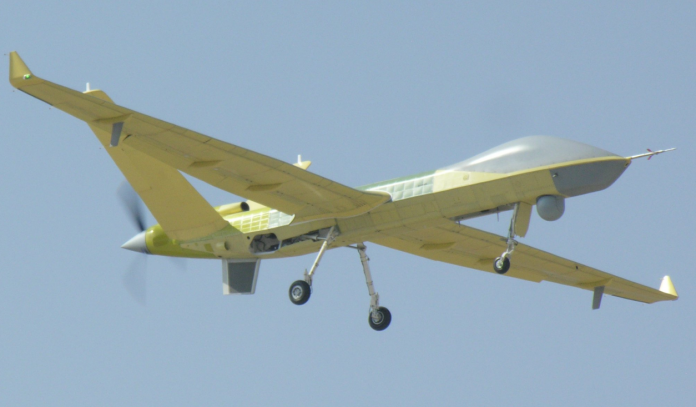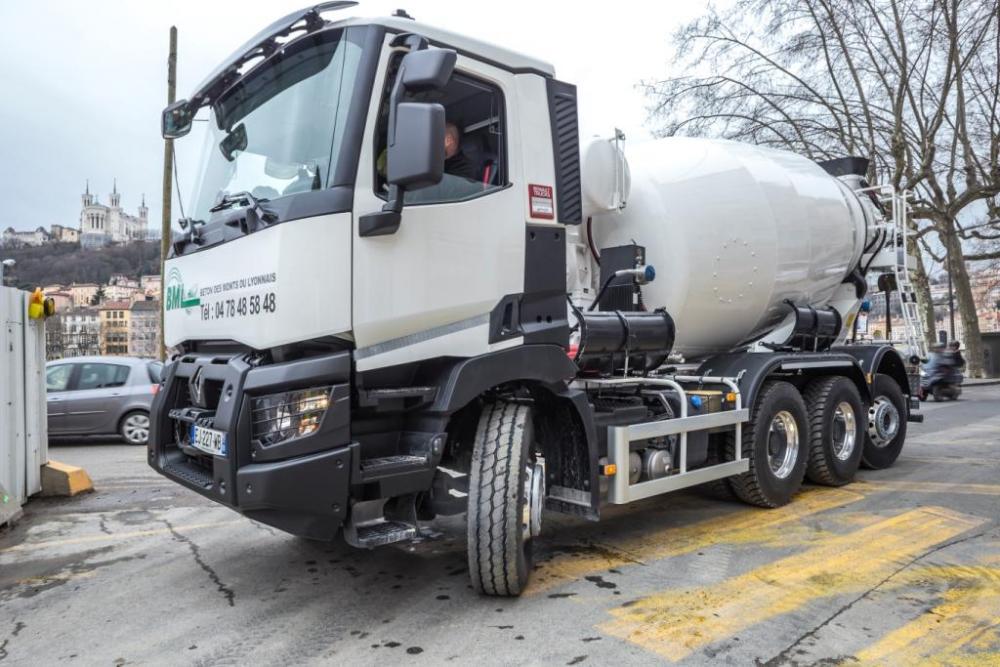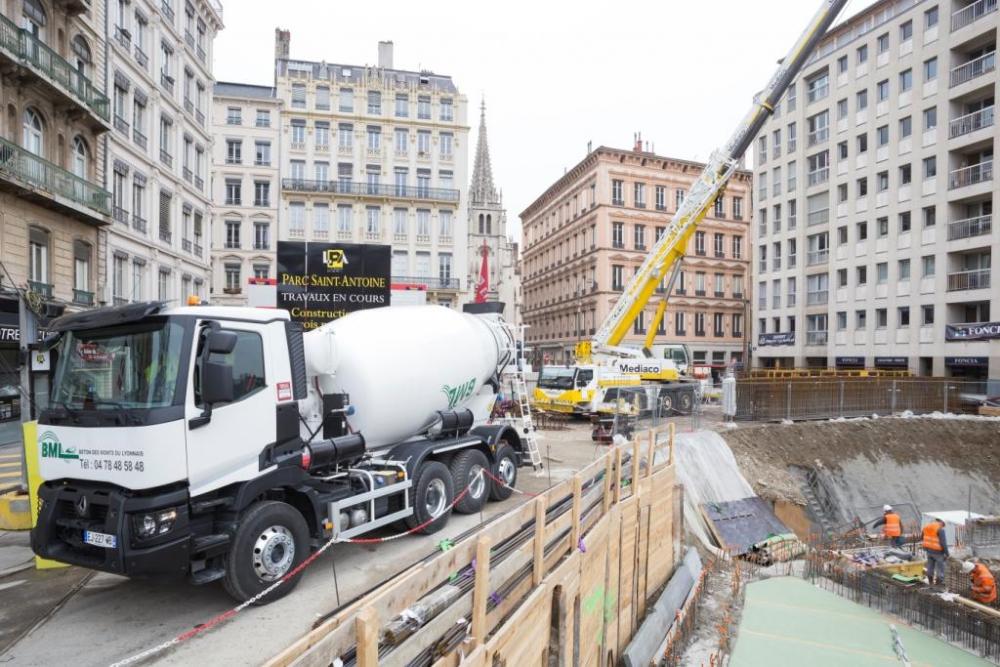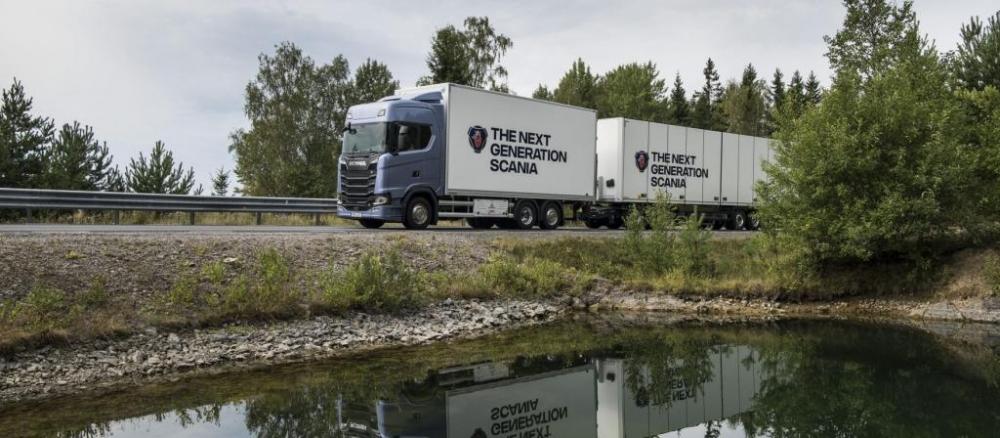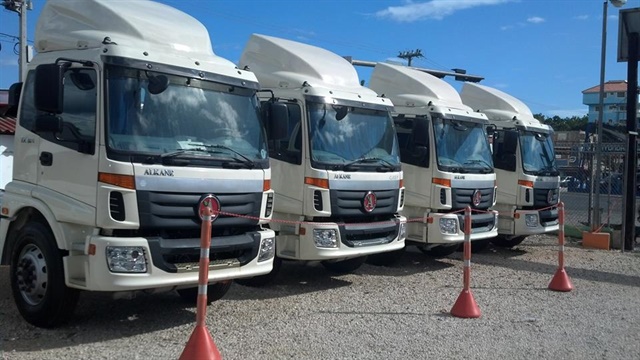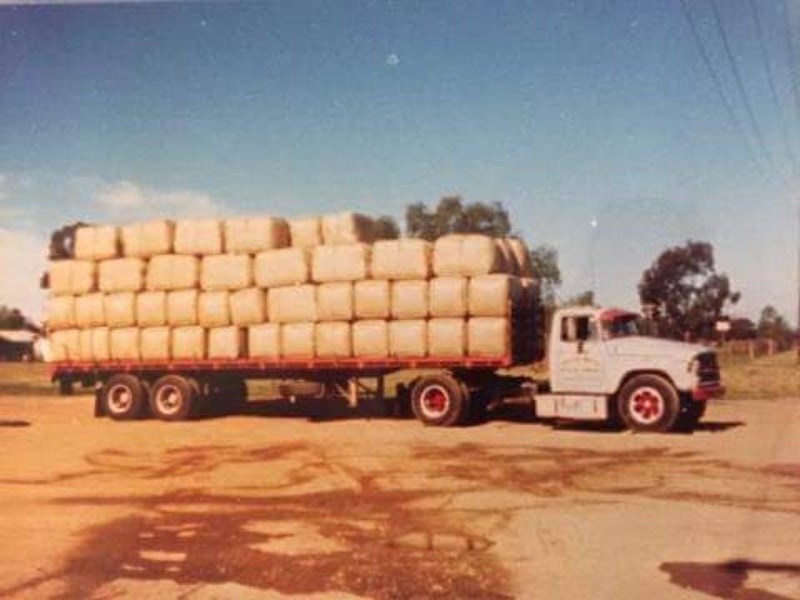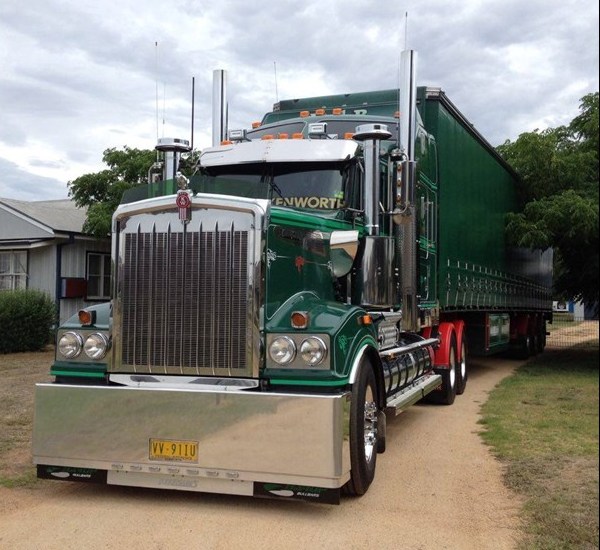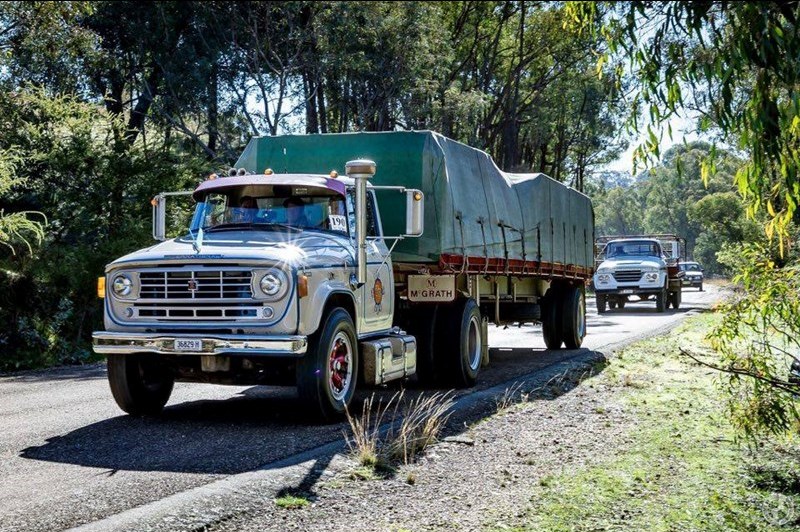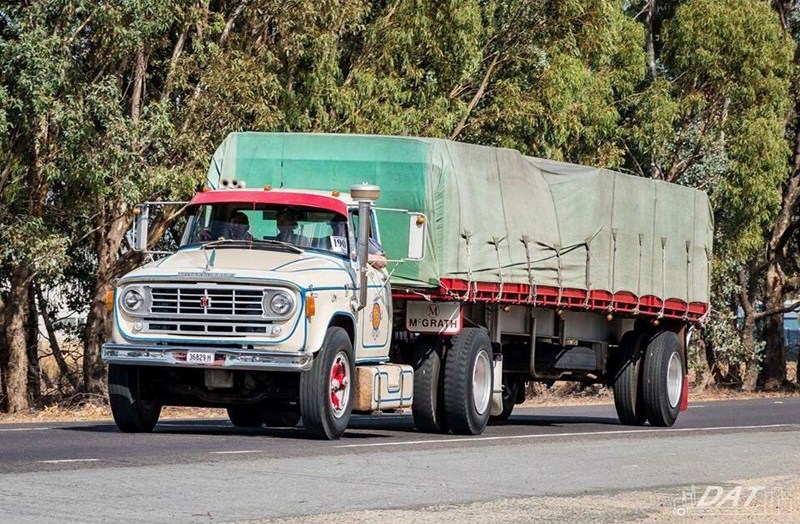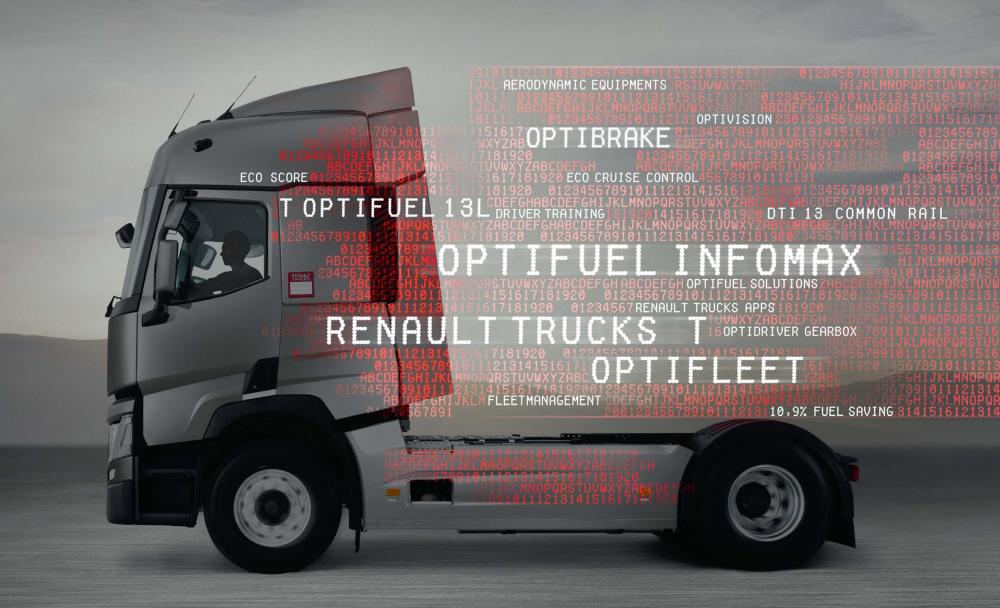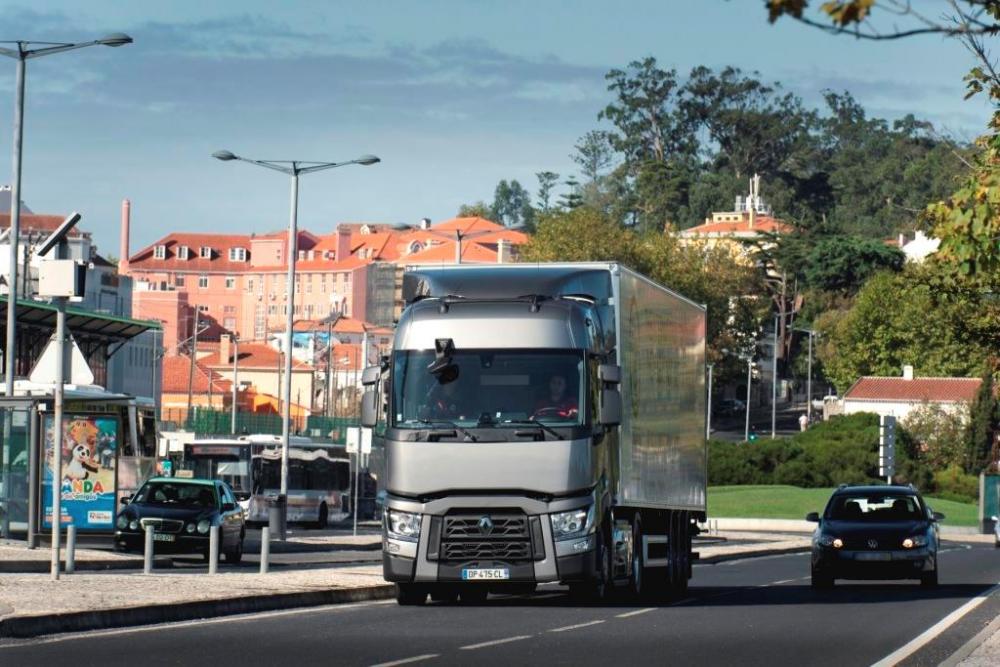
kscarbel2
Moderator-
Posts
18,935 -
Joined
-
Days Won
114
Content Type
Profiles
Forums
Gallery
Events
Blogs
BMT Wiki
Collections
Store
Everything posted by kscarbel2
-
The Guardian / March 20, 2017 The Guardian is releasing a new set of nationwide data for 2015, which can be used to do analysis of how gun murder clusters within neighborhoods We spend a lot of time talking about which cities see the most gun violence. But analyzing gun violence at the city level is very misleading. Gun violence is much more local than that. The Guardian is releasing a new set of nationwide data for 2015 that maps gun murders at the micro level – down to the local census tract. You can use this data to do analysis of how gun murder clusters within neighborhoods in your city or state. Our analysis was possible thanks to the not-for-profit Gun Violence Archive (GVA), which tracks shootings and gun deaths using media reports. This data set includes the latitude and longitude of each shooting incident. We mapped each of these geolocated gun murders to a census tract – which means that there’s a wealth of demographic data connected to each census tract, allowing you to analyze the levels of poverty, educational attainment and other factors in neighborhoods where gun murders happen. This article contains the data we used to conduct this analysis. We invite you to download this data and use it for further analysis and reporting. If you use this data, please make sure to credit the Gun Violence Archive and the Guardian. Using this data, the Guardian found that half of the United States’ gun murders in 2015 were clustered in 127 cities (Want to fix gun violence? Go local). We also found that violence was concentrated even further than simply the city level: census tract areas that contain just 1.5% of the country’s population saw 26% of America’s total gun homicides. We appended a few other fields to the existing GVA data. Using the FCC’s Census Block Conversion API, we placed each incident within its proper census tract. With the census tract identified, we used the Five-Year American Community Survey 2014-2010 to find demographic information for the tracts. We also determined the land area of each tract with the US Census: Cartographic Boundary Shapefiles – Census Tracts. We’ve also included a separate easy-to-use file of FBI murder data from 1985 to 2015. If you have questions about the data, please email gundata@theguardian.com. If you use this data to do your own analysis – whether you’re a journalist or a community organization – please let us know, and send a link to your final project to gundata@theguardian.com, or contact our reporters directly: lois.beckett@theguardian.com and jamiles.lartey@theguardian.com. Get the data Each file is a .csv, which can be opened in Excel and Google Sheets, in addition to the text editor of your choice. All GVA data is from 2015, but you can obtain data from 2014 to the present by going to their website or following them on twitter @gundeaths for daily updates. Incident-level data – each row includes a gun homicide incident. City-level data – each row includes a city or county (depending on how it was reported by the GVA), as well as counts for incidents and people killed. Tract-level data – each row includes a census tract, as well as counts for incidents and people killed. Previous stories have made use of UCR data, which we obtained from the FBI. City-level murder data from 1985-2015 – each row is a city, and includes the murder rate and raw number of murders for each year from 1985-2015. Some years are missing for cities. National data on city murder statistics from 2016 will not be available from the FBI until the fall of 2017. Download a description of all of the above data files with notes here.
-
Trump and Immigration (Illegal Immigrants in the US)
kscarbel2 replied to kscarbel2's topic in Odds and Ends
Trump administration: These police agencies didn’t help feds with deportations The Washington Post / March 20, 2017 Homeland Security officials on Monday unveiled the administration’s first list of law enforcement agencies that refused to detain jailed immigrants beyond their release dates so that the federal government could take them into custody and try to deport them. The List - https://www.scribd.com/document/342469185/ICE-Declined-Detainer-Outcome-Report-Jan-28-to-Feb-3-2017#from_embed Federal officials, who spoke on the condition of anonymity in a conference call with reporters, said local agencies, including some in Maryland and Virginia, failed to honor 206 detention requests from Jan. 28 to Feb. 3. President Trump in January ordered Homeland Security to issue a weekly list of crimes committed by non-citizen [illegal] immigrants and to identify agencies that refused to hold those people in jail on civil immigration-violation charges until federal agents could pick them up. “These numbers will continue to go up,” a Homeland Security official said. “There is a clear public safety issue here that will only be further illuminated as we go forward.” Advocates for immigrants say it is unconstitutional for local police to detain someone for a civil deportation proceeding when the judge in their criminal case has ordered them released. “This is part of an overall strategy to try to scare jurisdictions into becoming deportation agents,” said Cody Wofsy, a staff attorney with the American Civil Liberties Union’s Immigrants’ Rights Project. “And the truth is that jurisdictions have the legal right to refuse to become entangled with the federal immigration enforcement system.” Trump has threatened to withhold federal funding from what are called sanctuary cities, where local law enforcement agencies do not cooperate with the U.S. Immigration and Customs Enforcement bureau, but officials said they hoped such jurisdictions would start cooperating with federal agents instead. Officials identified 118 such agencies in the report Monday, though they cautioned it was preliminary. The National Immigration Law Center (NILC) estimates that 600 jurisdictions limit their cooperation with ICE, in most cases because they do not want immigrants to fear the police or be deported for minor traffic offenses. Homeland Security officials cautioned that the report offered only a snapshot of a week’s worth of detainers — requests from ICE to a law enforcement agency to hold an immigrant for up to 48 hours after they are released on bail so that immigration agents can take them into custody and seek to deport them. The report did not identify the alleged criminals affected by the declined detainers, but officials said many had been arrested for serious crimes, including aggravated assault and homicide. Most detainers were issued for citizens of Mexico, followed by Honduras. Some local law enforcement agencies suggested Monday that the agency’s methodology is flawed. More than 60 percent of the declined detainers were from Travis County in Texas, which on Feb. 1 adopted a policy limiting its cooperation with ICE. Major Wes Priddy, of the Travis County Sheriff’s Office, said the agency does detain criminals convicted of serious crimes for immigration officials. But he said his department does not turn over people awaiting trial. “We do honor ICE detainers. But we do it selectively and in a manner which we can abide by our policy,” Priddy said, adding that in the past, immigration officials have deported people before trial, depriving defendants of their day in court and, in some cases, denying closure to crime victims. “We want to make sure that justice is served on the local level as well.” Jessica Vaughan, director of policy studies for the Center for Immigration Studies, said the list is an attempt to pressure localities to change their policies and inform the public that sanctuary cities sometimes release serious criminals. When he signed the Jan. 25 executive order intensifying deportation efforts, Trump said jurisdictions put U.S. citizens at risk by releasing criminals who should be deported and who, in some cases, commit additional crimes after being released from jail. -
Recently declassified CIA document shows that the U.S. explored multiple scenarios of Syrian regime change - decades before the start of the war in 2011. The reports contains some striking passages, and it's remarkably accurate, showing what actually went on to happen. The CIA predicted the rise of ISIS, and the ramifications, back in 2012. .
-
Trump and Immigration (Illegal Immigrants in the US)
kscarbel2 replied to kscarbel2's topic in Odds and Ends
Almost half of Canadians want illegal border crossers deported Reuters / March 20, 2017 Nearly half of Canadians want to deport people who are illegally crossing into Canada from the United States, and a similar number disapprove of how Prime Minister Justin Trudeau is handling the influx, according to a Reuters/Ipsos opinion poll released on Monday. A significant minority, 4 out of 10 respondents, said the border crossers could make Canada "less safe." The increasing flow of hundreds of asylum-seekers of African and Middle Eastern origin from the United States in recent months is becoming a contentious issue in Canada. Although there has been broad bipartisan support for high levels of legal immigration for decades in Canada, Trudeau is under pressure over the flow of the illegal migrants. He is questioned about it almost every time he appears in parliament, from opponents on the left, who want more asylum-seekers to be allowed in, and critics on the right, who say the migrants pose a potential security risk. Canadian opposition parties seized on the poll results, with both those on the left and the right saying they underscored their positions. Canadians appeared to be just as concerned about illegal immigration as Americans, according to the poll, which was conducted between March 8-9. Some 48 percent supported "increasing the deportation of people living in Canada illegally." (For graphics on asylum process, immigration poll see tmsnrt.rs/2nyY8CJ) When asked specifically about the recent border crossings, the same number - 48 percent - said Canada should "send these migrants back to the U.S." Another 36 percent said Canada should "accept these migrants". In the United States, where President Donald Trump was elected partly on his promise to boost deportations, 50 percent of adults supported "increasing the deportation of illegal immigrants," according to a Reuters/Ipsos poll conducted in the same week. "There are so many people in the world who want to come in and go through the right channels," said Greg Janzen, elected leader of a Manitoba border municipality that has seen many crossers. "That's what's pissing most people off. These guys are jumping the border," he said. "Refugees are much more welcomed when we have gone and selected them ourselves as a country, as opposed to refugees who have chosen us," said Janet Dench, executive director of Canadian Council for Refugees. Ottawa set an immigration target of 300,000 for 2017, or just under 1 percent of the population, the same level as 2016. It reduced the 2017 target [???] for resettled refugees to 25,000 from 44,800 in 2016, when it welcomed 25,000 Syrian refugees. -
"He's that rarity in Washington sometimes," Obama said when nominating Comey to lead the FBI in 2013. "He doesn't care about politics, he only cares about getting the job done. At key moments, when it's mattered most ... he was prepared to give up a job he loved rather than be part of something he felt was fundamentally wrong." . . .
-
Bob, I think he's 500 percent right. That cab has stood the test of time. If you saw it (the cab-in-white) today for the first time, you'd think it was a fresh design. With updated grooming, it would be very competitive. I'd bet the tooling has not yet been destroyed.
-
Renault Trucks' K Series demonstrates robustness in Guinea
kscarbel2 replied to kscarbel2's topic in Trucking News
The DTI11 and DTI13. They are related to the D11 and D13. In my humble opinion, Renault's versions are the best in the group. Renaults are more Renault than a Mack is a Mack. Renault is the group's best performing brand. Great people. http://www.en.renault-trucks.com/k-380-520/ http://corporate.renault-trucks.com/en/press-releases/moteurs-euro-vi-fiabilite-et-maitrise-de-la-consommation.html . -
You know someone isn’t your ally when................ -------------------------------------------------------------------------------------------- Saudi Arabia orders 300 Chinese strike-capable reconnaissance unmanned aerial vehicles Defense Blog / March 20, 2017 Saudi Arabia has signed a contract for the acquisition of 300 of the newest Chinese strike-capable reconnaissance unmanned aerial long-haul vehicles Wing Loong II (also known as Pterodactyl II). China’s state-run Xinhua news agency reported on 28 February said the deal represented the “biggest overseas purchase order in the history of Chinese [UAV] foreign military sales”. But the identity of the customer and the size and value of the contract were not disclosed. The export order was revealed on the same day that the Wing Loong II completed its maiden flight. The new Wing Loong II is a long-endurance strike-capable reconnaissance unmanned aerial vehicle (UAV) developed by Chengdu Aircraft Design & Research Institute (CADI), a division of the Aviation Industry Corporation of China (AVIC). CAIG formally unveiled the Wing-Loong II during Air Show China in November 2016. The Wing Loong II has a payload of 400 kg, which can be used for armaments and/or ISR equipment. The Wing-Loong II can reach a top speed of 370 km/h and service ceiling of 9,000 m. It has an endurance of 32 hours. While observers have noted that the Wing-Loong II bore a strong resemblance to the MQ-9 Reaper, the Wing Loong II is a smaller and lighter platform than the Reaper. .
-
Renault Trucks' K Series demonstrates robustness in Guinea
kscarbel2 posted a topic in Trucking News
Renault Trucks Press Release / March 20, 2017 Renault Trucks' K Series carries bauxite extracted in a mine at Boké in Guinea. The truck carries a 130 metric ton load from the mine to the port of Boké in a single trip. . . -
Renault Trucks Press Release / March 17, 2017 On 21 February 2017 in Lyon, the keys to a Renault Trucks C8x4 Tridem were handed over to BML, the specialist in ready-to-use concrete in the Auvergne-Rhône-Alpes region. This highly manoeuvrable construction vehicle is ideal for work in urban environments. At the Renault Trucks plant in Lyon on 21 February 2017, Philippe Ville, director of BML (Béton des Monts du Lyonnais), was given the keys to a Renault Trucks C8x4 Tridem by Christophe Deshayes, Sales Director at Renault Trucks France. This vehicle is intended for use on worksites in city areas, in particular the Saint-Antoine car park project in Lyon. The Renault Truck C8x4 Tridem has a short wheelbase of 3200 mm and a fourth steering axle that brings its turning radius down to 900 mm, 10% better than a classic 8x4 and significantly boosting its manoeuvrability. "Our key issue was handling, which is why we wanted a vehicle designed for work on urban projects, which standard worksite trucks often find difficult to access," explained Philippe Ville. For Renault Trucks, it is essential that customers are offered transport solutions that are fully suited to the work they do. The Renault Trucks C8x4 Tridem provides an ideal response to the requirements of concrete companies, largely due to its 9 m³ mixer. "The air suspension system on this truck provides our drivers with really comfortable working conditions, enabling them to easily and automatically raise the vehicle to adjust the concrete tipper," explained BML Director, Philippe Ville. When empty, the back steering axle saves fuel and reduces tyre wear. When loaded, it significantly improves the grip of the vehicle. BML has a fleet of 200 trucks, mainly Renault Trucks vehicles. "We have been loyal to this brand for many years and appreciate the quality of the vehicles and comfort of the new cabins. The presence of a local network and the quality of the after sales service are also important criteria," Philippe Ville continued. "As Renault Tracks are also based in the Lyon area, we think this is a logical choice." .
-
Scania Press Release / March 17, 2017 Scania’s net sales rose to a record level of nearly SEK 104 billion. Total deliveries of trucks and buses and coaches reached all-time high levels. Service revenue amounted to a record of almost SEK 22 billion, an increase of 5 percent (7 percent in local currency). Summary of the full year 2016 Operating income excluding items affecting comparability rose by 6 percent to SEK 10,184 m. (9,641), resulting in an operating margin of 9.8 (10.2) percent Operating income amounted to SEK 6,384 m. (9,641) and was negatively impacted by a provision of SEK 3.8 billion related to the European Commission’s competition investigation Net sales rose by 10 percent to a record high SEK 103,927 m. (94,897) Cash flow amounted to SEK 3,427 m. (4,376) in Vehicles and Services Comments by Henrik Henriksson, President and CEO: “Scania’s net sales rose to a record level of nearly SEK 104 billion. Total deliveries of trucks and buses and coaches reached all-time high levels. Service revenue amounted to a record of almost SEK 22 billion, an increase of 5 percent (7 percent in local currency). The company’s operational performance was strong.Higher vehicle volume in Europe and higher service volume impacted earnings positively but this was partly offset by negative currency rate effects, lower deliveries in Latin America (mainly related to Brazil), and by the high cost of investments related to Scania’s new truck generation.Scania’s position in the European market remains strong with a market share of 16.5 percent. The replacement need and economic situation in Europe continues to have a positive impact on demand for trucks. Order bookings in Latin America remain at a low level, mainly due to the very uncertain situation in Brazil. In Eurasia, order bookings increased somewhat and Russia appears to have bottomed out. Demand for buses and coaches remains at a high level in Europe. In Engines, demand for industrial and marine engines is good, while remaining weak on the power generation side. The success of the new generation of Scania trucks has been immediate and the truck has outperformed the competition in all trade press tests it has entered. Nearly all aspects have been praised – the powertrain, performance, comfort, braking capacity, visibility and steering. Combined with Scania Maintenance with Flexible Plans, our new tailor-made service enabled by continual monitoring of connected vehicles’ operating data, customer earning potential is enhanced. When every truck receives exactly the maintenance it needs, the customer enjoys maximum vehicle uptime.“ Scania Year-end Report January-December 2016 - https://www.scania.com/group/en/wp-content/uploads/sites/2/2017/03/scania-year-end-report-2016.pdf .
-
-
Beautiful truck. I again say that, in my humble opinion, the HN80 was as superbly engineered, on par with the CH. The HN80 only failed because Jacque Nassar mistakenly sold the heavy truck unit. The HN80 caused Ford's heavy truck sales to rise over 50 percent in March 1997. That's impressive. And in the first quarter of 1997, Ford zoomed forward, from last place in 1996, past Volvo in 1997. https://www.bigmacktrucks.com/topic/41662-a-look-back-at-“american”-innovation-the-ford-hn80-new-aeromax-and-louisville/#comment-302854
-
. .
-
The economic migrants heard European countries offered endless free handouts, so they came in by the hundreds of thousands. The U.S. has the same problem, except the takers of our social welfare handouts are composed both of economic migrants AND existing U.S. residents. The situation has gotten so far out of hand. There have been, are, and always will be a "few" that need and deserve a helping hand. But our government has created a system that is carrying millions, at the taxpayer's expense. The "entitled" masses.
-
In my day, they simply put snow chains on the rear tires of the Ford (1961-1966 vintage*) school buses and we went to school as normal. Things have changed a lot since then. At the sight of a few snow flakes, they shut down the schools. * https://www.amazon.com/1966-Ford-School-Chassis-Brochure/dp/B00SZQYMRI
-
Critics push U.S. to help Europe by taking more refugees
kscarbel2 replied to kscarbel2's topic in Odds and Ends
Erdogan urges Turks in Europe to have 5 children Associated Press / March 17, 2017 ANKARA, Turkey — Turkish President Recep Tayyip Erdogan has called on Turks living in Europe to have at least five children, saying it would be the best response to Europe's "injustices." Erdogan made the comments Friday while campaigning in the city of Eskisehir for a referendum that would usher in a presidential system and enhance his powers. The Turkish leader has unleashed scathing rhetoric toward European nations — especially the Netherlands — after Turkish ministers were prevented from carrying out campaign meetings there. On Friday, Erdogan told Turks in Europe: "Go live in better neighborhoods. Drive the best cars. Live in the best houses. Make not three, but five children. Because you are the future of Europe. That will be the best response to the injustices against you." -
Alkane to License Assembly Operations in North America Heavy Duty Trucking / March 17, 2017 Alkane Truck Company, a South Carolina-based assembler of alternative fuel vehicles, has announced plans to establish more than a dozen assembly facilities in the U.S., Canada, and Mexico over the next three years. The company said it is rolling out the expansion plan to accelerate its production timeline in response to orders from its dealership network. This is the first time that Alkane has offered its business model to independent entrepreneurs. “We will provide training for their employees and deliver all components required to assemble Alkane vehicles for direct shipment to our existing and ever-expanding dealership network," said Bob Smith, CEO of Alkane Truck Company. These business partners will own 100% of their associated assembly facility, so profits generated would be entirely their own; and as owners, they'll also be the recipients of any state and local incentives offered to new business startups in their respective regions." Alkane is currently working with economic development offices to identify potential business partners interested in becoming contract assemblers. "Proximity to shipping ports, transportation hubs and easy highway access would be ideal," said Smith. "We are looking for a facility of around 20,000 square feet under one roof with about a 30,000 square foot outside staging area and at least one truck-level dock for use loading and unloading with a forklift." For an initial licensing fee and a monthly charge, each owner or operator will be allowed to use the Alkane brand name, Alkane's EPA, CARB, and DOT certificates, and the company's supply chain to assemble and deliver its Class 7 and 8 trucks as well as the Humvee-style Dominator vehicle. Assembly facilities will be required to pay for and maintain an inventory of parts while Alkane will provide ongoing support and replacement parts. "Not a 'franchise' agreement but rather a simple contract, this is an excellent opportunity for anyone interested in vehicle assembly to get into business with very little risk," said Smith. "Bringing an assembly facility into a community can have an incalculable economic impact-- improving the quality of life of local residents, flooding cash into struggling existing companies and paving the way for new startups in ancillary businesses. These will be high-paying, skilled jobs." .
-
International Truck Launches New 12.4L Diesel Engine
kscarbel2 replied to kscarbel2's topic in Trucking News
Jacobs engine brake available for International A26 Fleet Owner / March 17, 2017 Jacobs Vehicle Systems announced the launch of a compression release engine brake for the International A26 engine. Jacobs and Navistar engineers collaborated to provide an engine brake for the latest A26 International engine offering. “By leveraging the benefits of the new Variable Geometry Turbo, the A26 engine brake performance increased up to 67% at lower engine speeds and higher altitudes,” according to the company. “This engine update improves driveability, increases foundation brake life, and lowers total cost of ownership of International trucks equipped with the A26 engine brake.” “Jacobs is proud to continue working with Navistar and International Trucks to provide engine brakes that complement their latest A26 engine. With this enhanced Jacobs Engine Brake, drivers experience a reduction in the need for downshifting and improved NVH (Noise, Vibration, and Harshness),” said Sergio Sgarbi, president, Jacobs Vehicle Systems. The Jacobs Engine Brake is now available on the A26 engine and will come factory installed on all International LT Series of long-haul vehicles and RH Series of regional haul vehicles. -
Volvo Trucks Australia / March 16, 2017 .
-
Owner/Driver / March 17, 2017 Taylor Bros Interstate had one special truck they could always rely on... Back in May of ’72, brothers Jeff and Jack Taylor bought an International D1950 - a truck that the Taylor family has held onto ever since. Taylor Bros Interstate Transport kicked things off in 1960 and ran right up until 1999, putting the little Inter to work for most of that period. Now owned by the Son of Jeff, Brian Taylor, the classic example still has the same bottom end and gearbox it drove off the factory line with…albeit with the wear and tear of 464,000 miles. With a 160 horsepower 464 cubic inch Cummins, this wasn’t as powerful as petrol equivalents but it was far more reliable, and Brian says his father and uncle were stoked with their purchase. "It was the first Taylor Bros Cummins-powered truck, all the rest were Perkins powered and made a lot less power," Brian said. "The gearbox is a Fuller T401 five speed and it has a two speed Eaton differential. "It only has a 12 tonne payload, but that was more than enough back then. "They were really happy with it." Mind you, Brian says in ’72 the truck cost just $12,400 – not bad considering how much use the Taylors got out of it! Back in 1985 Brian got his license straight out of school and began driving the Inter, carting loads out of Riverina. When the Taylor brothers retired and closed up shop in ’99, the truck was used to do some grain harvest work for the next four years. After that the truck was parked up in the shed from ’03 to ’09, when Brian decided to get it back on the road and club register it. "I inherited it off my old man in ’09 and it’s been getting around the classic truck scene ever since. "It stills going strong, I’m about to do my sixth Haulin’ the Hume. "It’s never let me down, so I plan on leaving it original and authentic." Brian owned a Kenworth T900, Kenworth K100, and Freightliner over 19 years as an owner-driver but sold them up not long ago and started driving for Burkinshaws Transport, a third generation operation based out of Wagga. The experienced truckie, with 33 years under his belt, is lucky enough to now steer an immaculate single-trailer Kenworth T909 packing a hefty 600hp. .
-
Trump and Immigration (Illegal Immigrants in the US)
kscarbel2 replied to kscarbel2's topic in Odds and Ends
States issuing drivers licenses to illegal immigrants (illegal aliens). Just unbelievable. U.S. law doesn't allow them to exist here. Enter legally, or be shown the door and forever blocked from entering again as penalty for the criminal act. -
Renault Trucks Press Release / March 16, 2017 The fourth edition of the Optifuel Challenge, an eco-driving competition organised by Renault Trucks, is about to begin. In total, more than 2,500 drivers from around the world will compete in their respective countries behind the wheel of the 13-litre Renault Trucks T Optifuel. The best driver from each country, the one who consumes the least without sacrificing commercial speed, will participate in the international grand finale in the autumn of 2017. Reducing fuel consumption depends not only on the truck, but the driver as well, as proven by the Renault Trucks Optifuel Challenge. This eco-driving competition has rewarded the best eco-driver in the world every two years since 2012. More than 2,500 drivers from 31 countries will compete behind the wheel of a Renault Trucks T. A caravan of 10 Renault Trucks T480 Optifuel trucks will make their way across European roads starting in April 2017. These vehicles boast the latest innovations designed to reduce fuel consumption. They are equipped with aerodynamic features such as roof deflectors, side deflectors, side fairings, and fairing extensions. They have 13-litre Euro 6 Step C engines with a commonrail injection system and are equipped with power mode override, eco-cruise control with Optiroll (a controlled free-wheeling mode), a disengageable air compressor, a variable-flow steering pump, and an automatic engine stop feature. This newest generation of trucks also features the Optivision predictive speed regulator, which uses a GPS connection to adapt gear shifting, acceleration, and speed according to the route topography. This impressive range of features will further increase haulage company profits. After a series of pre-selection trials, the best eco-drivers in each country will face off in the national finals. The best eco-driver from each country will then participate in the Optifuel Challenge international grand finale in October 2017. Starting in April 2017: pre-selection trials Each country that is participating in the Optifuel Challenge has pre-selection trials. In France, they will be held from April to June 2017, and the best eco-drivers will be selected via a new Optifleet feature: Ecoscore. Participating drivers will be evaluated and ranked according to their Ecoscore results, which are transmitted at the end of every month. The Ecoscore tool evaluates individual driving skills and truck use, using an algorithm built thanks to Renault Trucks' 20 plus years of eco-driving experience. The system measures driving efficiency based on three main criteria: - Anticipation (use of vehicle inertia and the brake pedal) - Proper use of the vehicle (time spent in the efficient zone) - Time spent with the engine idling The twenty best drivers will be chosen for the French final, which will be held on 18-19 September 2017 in Le Mans. October 2017: The international finale The best eco-drivers from each of the 31 countries participating in the competition will face off in the international grand finale in October 2017. The finale will be split into two parts: participants will first answer a questionnaire that tests their eco-driving knowledge, followed by a driving test on the open road in a Renault Trucks T Optifuel truck, lasting around 40 minutes. The winner will be the driver who consumes the least without sacrificing commercial speed. List of the 31 participating countries: Algeria, Germany, Austria, Belgium, Bulgaria, Chile, Croatia, Spain, Estonia, France, Finland, Hungary, Israel, Italy, Latvia, Lithuania, Luxembourg, Morocco, Norway, the Netherlands, Poland, Portugal, the Czech Republic, Romania, the United Kingdom, Serbia, Slovakia, Slovenia, Switzerland, Tunisia, Ukraine. .
-
USA Truck's President-Trucking Resigns Heavy Duty Trucking / March 16, 2017 The president of USA Truck’s trucking operations has resigned, effective March 13, in the latest in a string of leadership changes at the Van Buren, Arkansas-based company. In an SEC filing March 13, USA Truck announced that N. Martin Tewari resigned as President - Trucking of the company. No other details were offered other than the fact that a search for his replacement has begun. Tewari was named to the newly created position of President - Trucking in September 2015. He joined USA Truck from Con-way Truckload. USA Truck reported a fourth-quarter loss of $3.8 million, or 48 cents per share, compared to net income a year earlier of $3.9 million, or 39 cents per share. This happened as revenue slipped to $103.1 million from $118 million. And its trucking operation reported an operating loss of $6.2 million in the fourth quarter of 2016 versus an operating profit of $4.5 million a year earlier. “Our consolidated financial performance was unacceptable,” said James Reed, president and CEO, in reporting the company’s fourth-quarter and year-end 2016 results. There have been a number of leadership changes at USA Truck in recent years. Reed was named president and CEO in late January of this year, succeeding Randy Rogers. USA Truck has had three different presidents and CEOs in the past three years, after John Simone stepped down from the position in 2015 to receive cancer treatment. He died in March 2016 and Thomas Glaser was named to replace him in July 2015. Rogers succeeded Glaser in January of last year.
BigMackTrucks.com
BigMackTrucks.com is a support forum for antique, classic and modern Mack Trucks! The forum is owned and maintained by Watt's Truck Center, Inc. an independent, full service Mack dealer. The forums are not affiliated with Mack Trucks, Inc.
Our Vendors and Advertisers
Thank you for your support!


